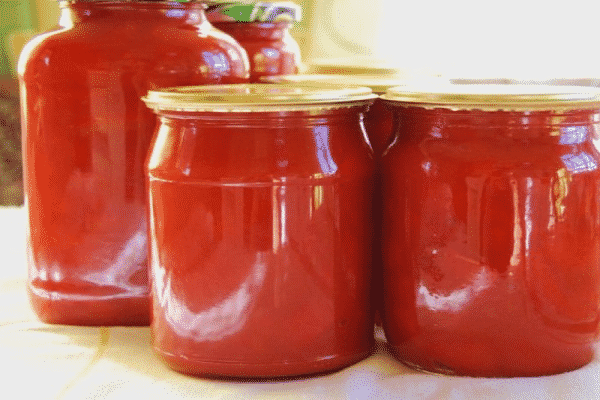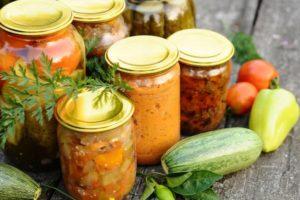TOP 10 step-by-step recipes for satsebel for the winter at home, storage
Satsebeli is a delicious spicy sauce native to Georgia. In our country, it is he who is associated with this name. In fact, in Georgia, this word is used for absolutely all sauces. That is why there are many options for recipes for its preparation. In most cases, sauces of this kind have a thick consistency with a pronounced sweet and sour taste and aroma of various spices. It is worth considering in detail the most popular recipes for making satsebeli for the winter.
Features of the dish
Satsebeli sauce can be served with meat, fish, various side dishes and pastries. It is a truly versatile supplement that goes with almost any meal. The nutritional value of the described sauce directly depends on the set of ingredients used. For example, a dish with the addition of nuts, grapes and pomegranate in large quantities is saturated with such useful minerals and substances as phosphorus, iron, B vitamins.
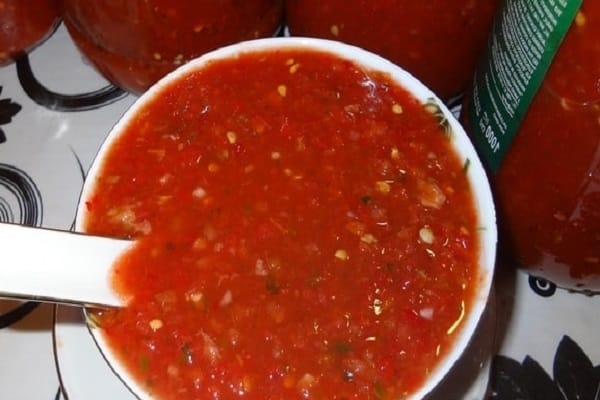
Moreover, in addition to its nutritional value and usefulness, satsebeli also strengthens the immune system in the fight against various diseases. These include diabetes mellitus, many diseases of the endocrine system, liver, cardiovascular system.
Most of these beneficial properties are due to the presence of a varied set of spices and herbs in the dish. Garlic, onion, cilantro - all this strengthens the immune system.
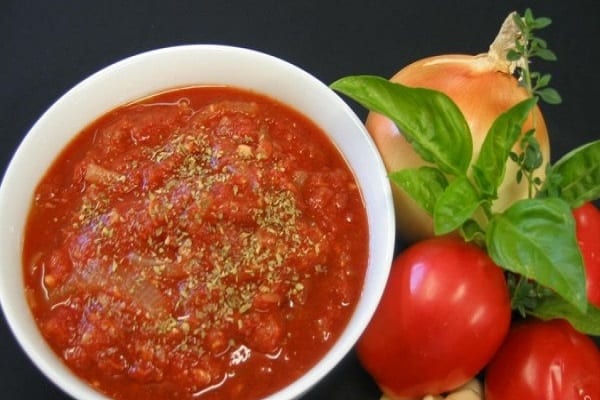
We prepare the necessary ingredients
The set of ingredients used to prepare satsebeli may vary depending on the recipe chosen. The dish can be prepared from:
- tomatoes;
- sweet bell pepper;
- red bitter pepper;
- cherry plums;
- nuts;
- grapes.
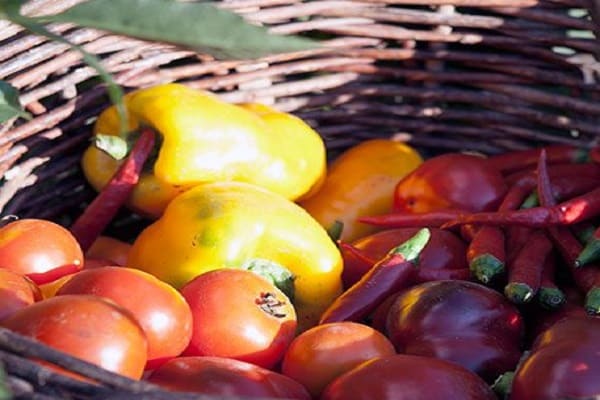
The following can be used as spices, herbs and herbs:
- onion;
- garlic;
- coriander;
- salt;
- cilantro;
- dill;
- parsley.
Such a number of variations of the described dish, as already mentioned, is due to the fact that in the homeland of the sauce - in Georgia - all sauces are called "satsebeli". That is why there are many recipes for its preparation in Russia.
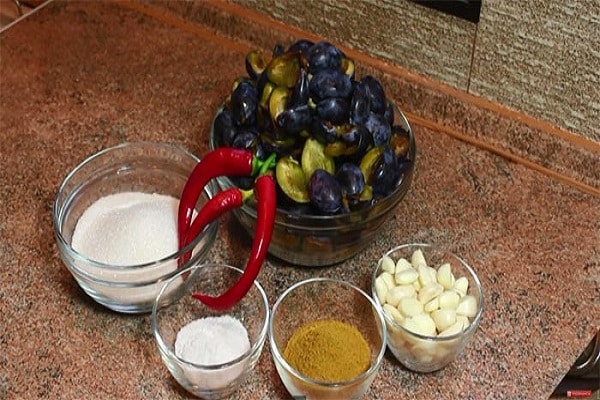
Homemade sauce options
It is worth dwelling in detail on the most popular recipes for making satsebeli sauce at home. In the information below, the following variations of the described dish will be considered:
- classic;
- from tomatoes;
- with the addition of cherry plum;
- from nuts;
- with red currants;
- from grapes;
- with the addition of dogwood.
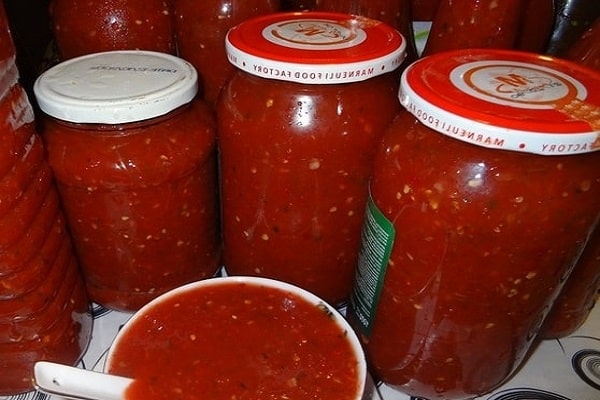
The classic way
To prepare and further preserve satsebeli sauce according to the classic recipe, you will need:
- tomatoes;
- sugar;
- sweet peppers;
- coriander;
- hot peppers;
- garlic;
- greens (dill, parsley).
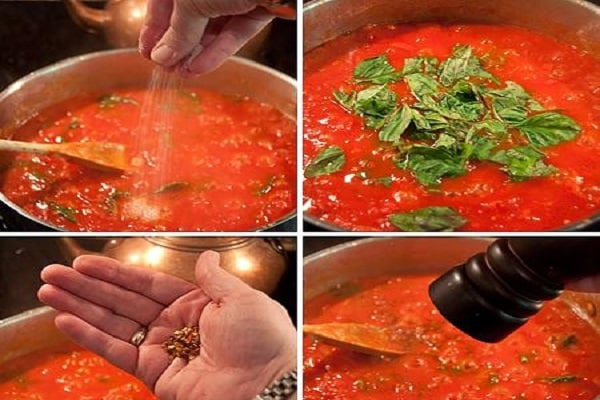
Before starting cooking, it is recommended to select the largest and fleshy tomatoes. The recipe looks like this:
- Initially, you need to scald the tomatoes with boiling water. To do this, it is enough to put them in boiling water for 20-30 seconds. Then you need to get them out and peel them.
- The pepper should be cut into small pieces, after clearing the seeds from the fruit.
- The prepared vegetables should be mixed until smooth in a blender, then add the previously crushed garlic clove to the resulting gruel.
- The resulting mass should be cooked over low heat for 30-40 minutes. For this, it is best to use pans with thick walls.
- Ten minutes before the end of cooking, add herbs and spices to taste to the dish.
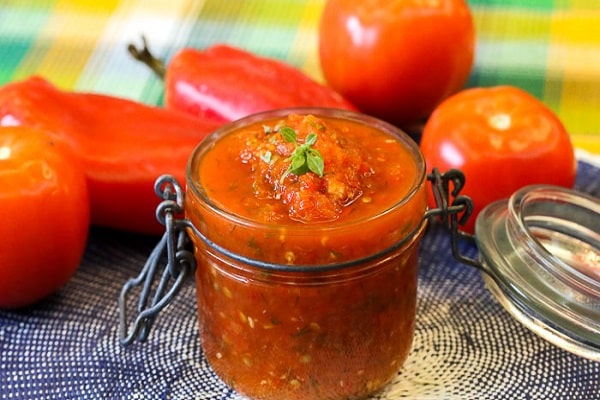
From tomato
Tomato satsebeli is prepared in almost the same way as the classic one, with the only exception that this version of the sauce uses little sweet pepper. As a result, sugar should be added additionally to give the satsebel a mild flavor.
Almost any spice or herb can be used to add flavor to a dish. In most cases, onions, garlic, dill and parsley are added.
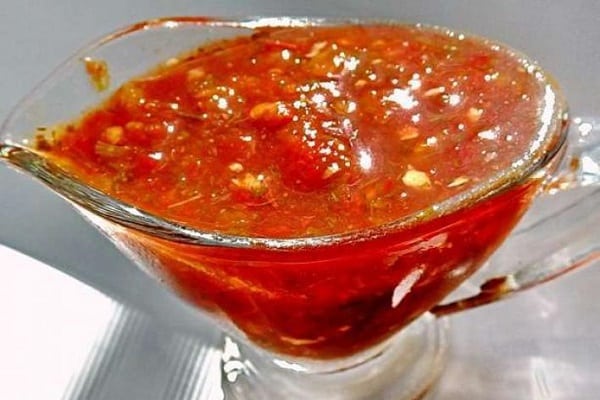
With the addition of cherry plum
To prepare satsebeli with the addition of cherry plum (plum), you will need:
- pre-cooked plum puree;
- sweet and hot peppers;
- garlic;
- adjika (can be used both dry and in the form of a sauce);
- salt and spices to taste.
Cherry plum puree is prepared as follows: the berries are thoroughly washed, and then placed in boiling water for several minutes. After boiling for five to seven minutes, the skins are removed from the berries. Then they are grinded with a blender until smooth.

After preparing the plum puree, you need to proceed directly to the preparation of cherry plum satsebeli, which is also often called tkemali. This is done as follows:
- sweet and hot peppers are ground with a blender;
- the resulting gruel is dismounted from the mashed potatoes and cooked over low heat for forty minutes;
- five to ten minutes before readiness, pre-ground garlic and onion are added to the sauce, after which spices and spices are added to the sauce to taste.
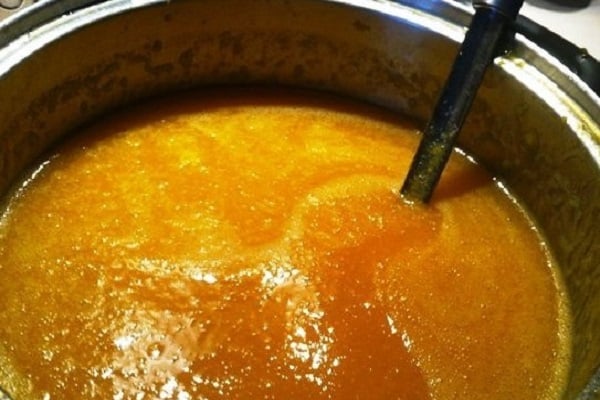
Recipe with nuts
Unlike the recipes described above, when preparing a dish of their nuts, the main thing is not tomatoes and peppers, but tomato paste. The remaining ingredients are listed below:
- hot chili;
- garlic;
- walnuts;
- cilantro;
- collection of spices khmeli-suneli;
- vinegar;
- salt and sugar to taste.
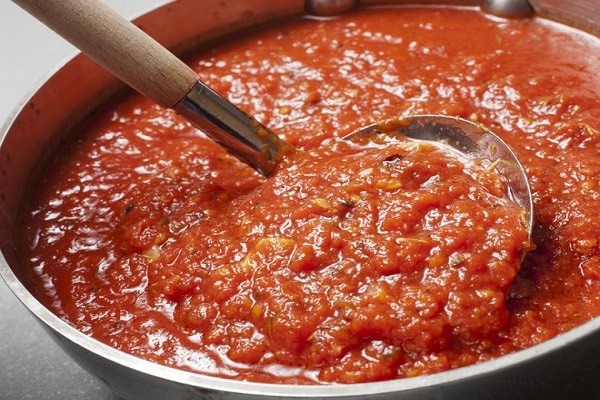
Ideally, you want to use as thick tomato paste as possible. It is diluted with water and mixed with table vinegar. The resulting mass is mixed with pre-prepared garlic gruel, pepper and cilantro.
The mixture made is cooked over low heat for an hour. A couple of minutes before readiness, chopped walnuts, salt and sugar are added to the dish.
There are alternative versions of this recipe that use lemon juice instead of vinegar.

Grape sauce
Satsebeli can be made from grapes. For cooking, you need to use slightly unripe green fruits. The recipe looks like this:
- juice is squeezed out of grapes;
- the juice along with the fruits is kept in a water bath for half an hour;
- then the mixture is salted to taste (with a pronounced acid, sugar can be added to soften);
- the next step is to filter the mixture and pour the resulting liquid into cans or bottles.
In this form, the sauce can be stored for a fairly long period of time. Before use, ground walnuts and garlic are added to grape satsebeli. Another option is to serve these ingredients with your meal.
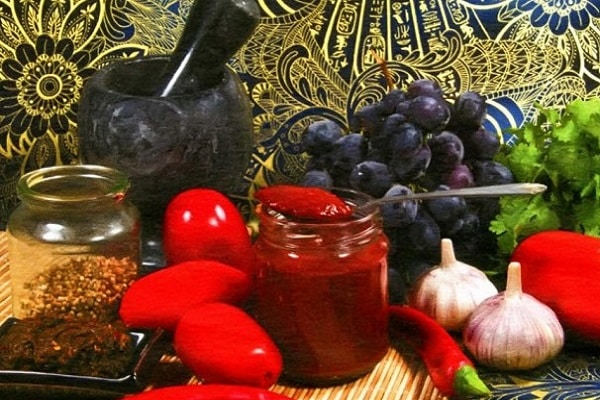
With the addition of greens and dogwood
To boil dogwood satsebel you will need:
- dogwood berries;
- herbs (cilantro, mint, parsley);
- hot chili;
- garlic;
- seasoning hops-suneli;
- wine or apple cider vinegar;
- olive oil;
- salt and sugar to taste.
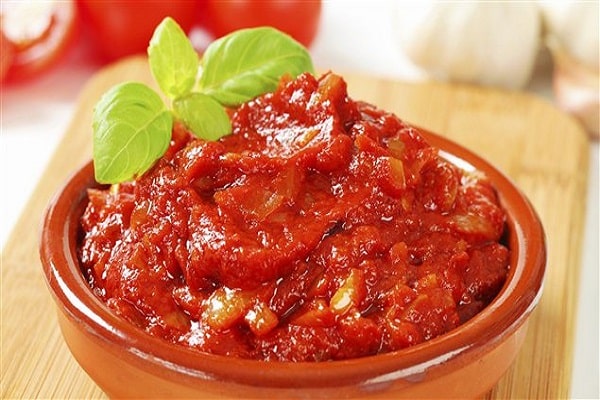
For cooking, you must choose large, fully ripe berries. They are steamed in boiling water until soft, and then mixed with pepper, garlic and herbs, ground in a blender. The resulting mass is filtered through a sieve. Oil, salt and sugar are added to it. If the consistency of the cooked food seems too thick, then it can be diluted with water to a "sour cream" consistency.
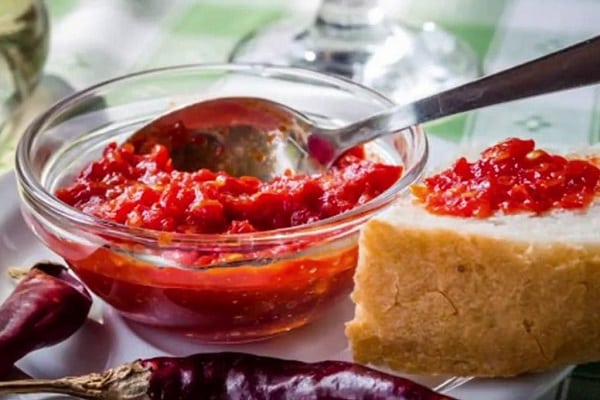
With red currant
Cooking red currant satsebel is the same as making dogwood sauce. The difference is that the berries do not need to be pre-ground or cooked. They are mixed with pepper and garlic and cooked over medium heat.
The remaining spices and herbs are added after the dish is fully cooked. They combine with the sauce still hot. After the dish, pour it into jars or other containers and leave to cool at room temperature.

Georgian
In order to cook a real Georgian satsebeli step by step, you need to follow the instructions below. The main sauce is tomato paste and cilantro.
- Cilantro should be thoroughly rinsed and cut into small pieces.
- Then it is mixed with garlic, herbs, black hot pepper and other spices (hops-suneli, salt).
- The resulting gruel is mixed with preheated tomato paste.
- The mixture is diluted with water. The amount of water used directly depends on the required consistency of the dish.
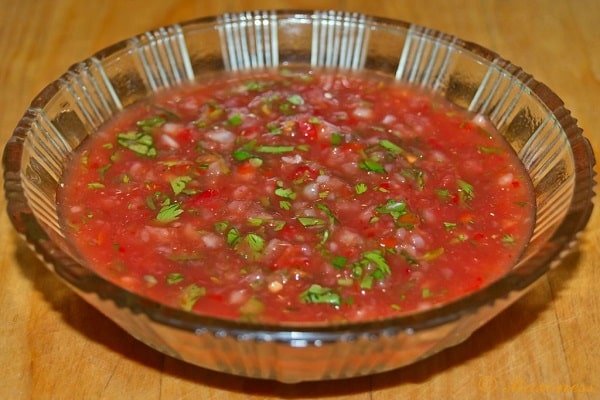
How to save blanks
Regardless of the recipe used for preparing satsebeli, the resulting dish can be preserved and sent to the cellar or basement for the winter. To do this, you need to pour the sauce, which has not yet cooled down after cooking, into pre-sterilized tanks or bottles and hermetically roll them up with lids.
To increase the possible shelf life of the dish, add a tablespoon of ordinary vinegar to the dish. The main thing is that in no case should the jars be artificially cooled in the refrigerator or in any other way. They should cool down on their own at room temperature. After that, the workpiece can be placed in a basement or cellar for storage.
